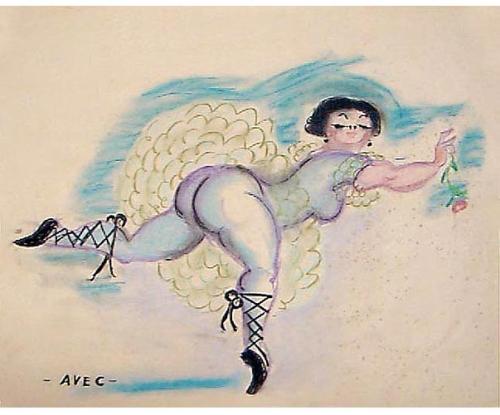Gunther Gerzso
dal 5/2/2004 al 30/4/2004
Segnalato da
ArtSpace/Virginia Miller Galleries
5/2/2004
Gunther Gerzso
ArtSpace/Virginia Miller Galleries, Miami
Titled 'Gunther Gerzso: Defining Mexican Abstractionism,' most of the 120 works in the ArtSpace/Virginia Miller Galleries exhibition are from a private collection of drawings and paintings from the 1930s and 1940s. A number of later works are being added to the show as examples of Gerzso's nonrepresentational, architectonic paintings.

South Florida art enthusiasts will have a rare opportunity to view a world premiere exhibition of more than 100 early works of the Mexican master artist Gunther Gerzso at ArtSpace/Virginia Miller Galleries from February through April 2004.
Sometimes compared with Pablo Picasso and Joaquin Torres-Garcia, Gerzso is 'one of the great Latin American painters,' according to Octavio Paz, the Nobel Prize-winning Mexican author.
Titled 'Gunther Gerzso: Defining Mexican Abstractionism,' most of the 120 works in the ArtSpace/Virginia Miller Galleries exhibition are from a private collection of drawings and paintings from the 1930s and 1940s. A number of later works are being added to the show as examples of Gerzso's nonrepresentational, architectonic paintings.
'This is the first time these early works have ever been exhibited. It's fascinating to see how Gerzso progressed stylistically as he evolved as an artist,' stated Virginia Miller. 'These drawings and paintings have been called pivotal to understanding the visual language that Gerzso later created.'
The show coincides with a major current exhibition, 'Risking the Abstract: Mexican Modernism and the Art of Gunther Gerzso,' being shown at the Museum of Modern Art in Mexico City from November 12-February 22 and at the Mexican Fine Arts Center Museum in Chicago from March 19-June 27, 2004.
The retrospective was launched at the Santa Barbara Museum of Art from July-October 2003. 'We need to look at the figures who shaped this (Latin American) art in the 20th century,' noted Santa Barbara Museum Director Phillip M. Johnston in the exhibition catalog. 'Gerzso is right up there with the best of them.'
Before he pioneered abstract art in his native country, Gerzso worked as a set designer at the Cleveland Playhouse. During those years, from 1935 to 1941, he began developing as a fine artist, exploring various styles. Most of the works in the Coral Gables exhibition are from this period.
'To be able to see so many works done by a major artist during his formative years is an extraordinary opportunity,' notes gallery owner Virginia Miller. 'Much of the earliest work by so many master artists was discarded or destroyed, because they did not appreciate its value in terms of art history. The works that survive often become sought after by scholars and collectors. The early works of Picasso, for example, have become quite valuable.'
Gerzso is best known for his mature work: geometric abstractions, whose jewel-like glazes feature colors and textures that suggest the cultural heritage of Mexico. Several of these are in the ArtSpace/Virginia Miller Galleries exhibit. 'I want to give viewers a well-rounded experience of Gerzso's art,' Miller said.
According to Octavio Paz, 'In all Gerzso's pictures there is a secret. His painting indicates its existence behind the canvas. The depicted rendings, mutilations and sexual hollows have a function: they allude to what lies on the other side.'
Diana C. du Pont, curator of the 'Risking the Abstract' exhibition, observes that Gerzso often is 'expressing a reality behind surface reality...the necessity for mystery and poetry in art.' She also notes that Gerzso's style is rooted in nature and the human figure, particularly the female figure, as well as in pre-Columbian architecture.
Born in Mexico in 1915 of Hungarian and German parents, Gerzso was sent to live with an uncle in Switzerland in the early 1920s, when he was 12. His uncle was an art historian and dealer, and the youthful artist was surrounded by Old Masters.
'I got my art education from my mother's brother, an art dealer in Switzerland,' Gerzso said. 'He sold pieces of the caliber of Rembrandt, Cézanne, Titian.'
Their neighbors in Lugano were Paul Klee and Herman Hesse, but it was an Italian set designer who most impressed the youthful Gerzso. He moved back to Mexico when he was 18, and through his family associations with the emigré community, he was offered an apprenticeship at the Cleveland Playhouse, one of the nation's most respected theater companies.
Within a few years he was designing its sets and occasionally, costumes as well. Some of the early works in the ArtSpace/Virginia Miller Galleries exhibition are set designs and costume studies, while others from this period are sketches, drawings and small paintings influenced by artists such as Picasso, George Grosz, Matisse, and Giorgio de Chirico.
It wasn't until two of his drawings were selected for an exhibition at the Cleveland Museum of Art in May of 1939 that Gerzso decided that he wanted to concentrate on being a painter.
Although he continued to make a living as a set designer, particularly in Mexican movies, from that time onwards he began to perfect the painting techniques that he needed in order to express his abstract concepts.
'Gunther Gerzso: Defining Mexican Abstractionism,' will be exhibited at ArtSpace/Virginia Miller Galleries from February 6-April 30, with receptions from 7-10 p.m. on February 6th, March 5th and April 2nd.
Open from 11 a.m. to 6 p.m. Monday through Friday and by appointment, the gallery is located at 169 Madeira Ave., in the heart of the Coral Gables business district. For more information, call 305-444-4493.
Image:
Gunther Gerzso
Avec, 18 1/16 x 22 1/16inches, 1935-1941, Pastel and Charcoal on Paper, GGE322
ArtSpace/Virginia Miller Galleries
169 Madeira Avenue, Coral Gables (Miami), Florida 33134
tel: 305 444 4493 fax: 305 444 9844



